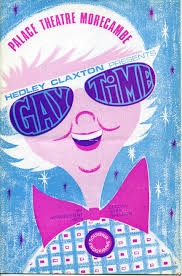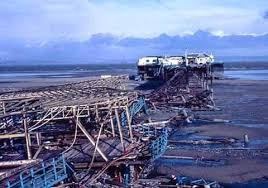
I once passed artists Kate Drummond and Shane Johnstone busy decorating the toilet block at the Battery with a harlequin-patterned arrow pointing the way to the promenade. Their inspiration came from a sign (now half-hidden by another building) which advertised shows at the Palace Theatre on Sandylands Promenade, The West End Frolics – Best Show in Town.
The Palace was built in a subdued Art Deco style by Alderman JW Carleton in 1933. Under his daughter, Mrs Sybil Sheldon, the Palace became home to Hedley Claxton’s Gaytime, the longest-running summer show in the whole country.
Gaytime was staged at various seaside towns including Babbacombe, Newquay and Weston-super-Mare as well as Eastbourne, Margate, Paignton, Plymouth, Worthing and, of course, Morecambe. By changing the programme twice a week, anyone staying for a week’s holiday could go along to three different Gaytime shows during their stay.
When drummer Michael Dynan joined Gaytime in Morecambe in the late 1950s he was impressed by the amount of live entertainment in the town, second only he reckoned to Blackpool. The Central Pier, West End Pier, the Winter Gardens and Alhambra all had shows. Then there was an ice show and aqua show as well as repertory theatre at the Royalty and puppet shows at Heysham head. Together these catered for every possible taste.
Top of the bill at the Palace then was comedian Stanley Massey, barely known outside Morecambe but who had a tremendous local following. Hedley Claxton had an instinct for spotting talent, some of his finds including Dave Allen, Bruce Forsyth, Benny Hill, Ted Rogers and Reg Varney. Gaytime was built around its comics with singers, an impressionist or ventriloquist, musical act, dancers and musicians, often tried and tested from other Gaytime shows.
Though its audience was aging, Gaytime still drew the crowds in the 1960s and into the early 1970s with such performers as Bryan Burdon and Ann Emery (sister of TV comedian Dick Emery).
With the passing of Gaytime the Palace staged This is Show Business, This is Music Hall and This is Command Performance with local entertainer and performer, Ronné Coyles. The Palace closed in 1982.
